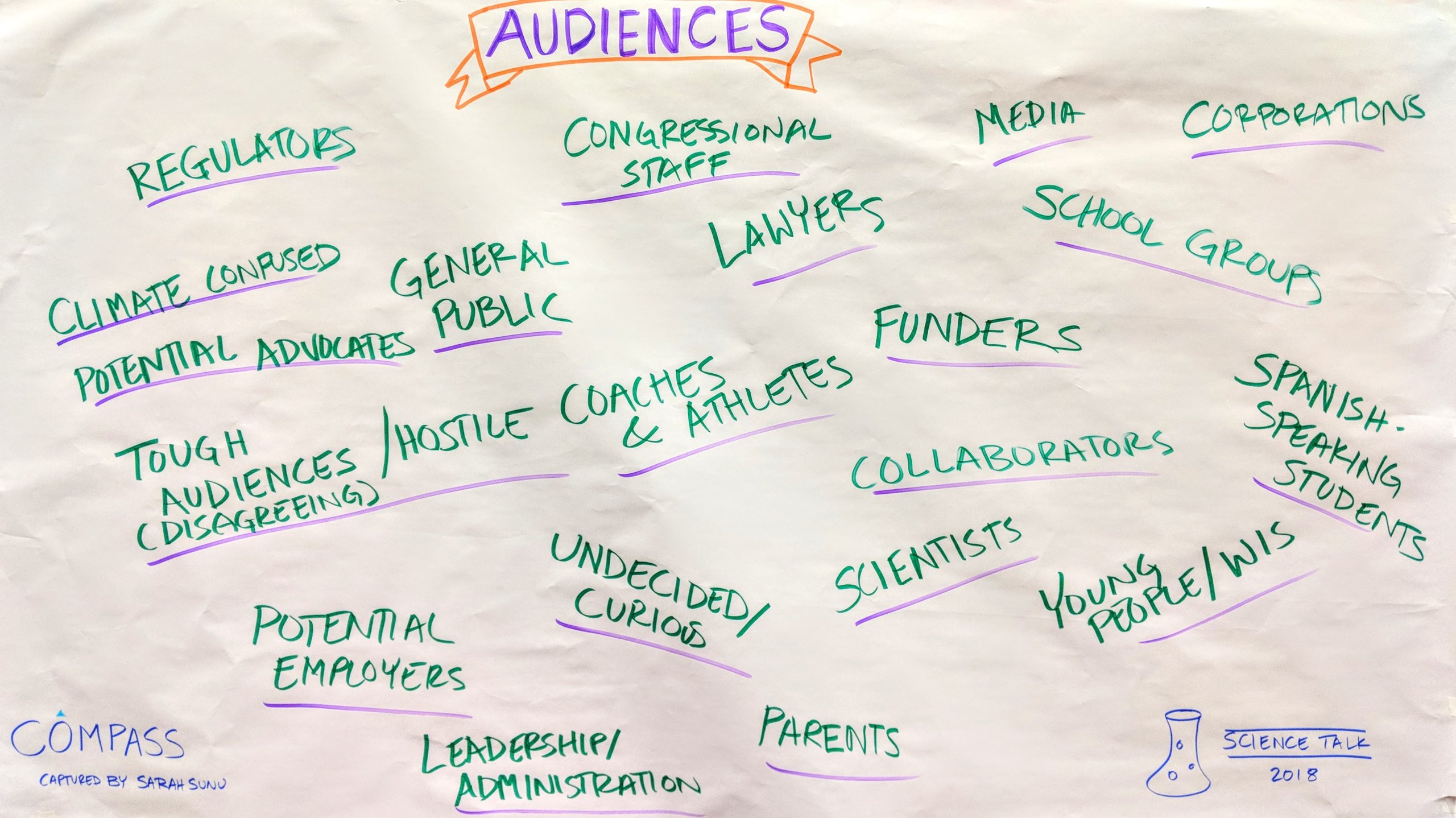What do you know about the kind of audience the organizers are trying to reach? What kind of flexibility do you have with the format (is it possible for you to start with a short discussion or some quick temperature-taking questions)? Even just arriving early and getting to know the people in the room a little can give you some insight.
Taking the time to get to know your audience pays off, which is why Dr. Estelle Robichaux and I made a point of it for the short course we led at Science Talk 2018, “Target Your #SciComm: Tools to Know and Reach Your Audience.” Science Talk is a conference about science communication that seeks to bring practitioners, scientists, students, and the scicomm-curious together to swap best practices, new ideas, and a love of sharing science (see our interview with Dr. Allison Coffin for more on how Science Talk came to be).
The techniques and tools that we share here wouldn’t work in every situation, but they may give you some ideas for how to creatively get to know your audience on-the-fly. So, for a conference session with over 50 participants and only 2 hours to try to cover your material in a way that is meaningful and relevant for everyone, how do you practice what you preach?
Get a snapshot
We wanted to gain a sense of who was the room and what had brought them there. To help us accomplish this, we had everyone line themselves up across the front of the room by their level of scicomm familiarity, from one side (those with no previous science communication experience) to the other (professional science communicators). We paired this tried-and-true facilitation icebreaker with graphic recording, a technique I’ve been experimenting with for COMPASS.
Have a discussion
We spent some time as a group discussing the goals the group had for their time in the session and at the conference, as well as who their target audiences were for their science communication work. Starting with this discussion helped us to better understand the interests and values of everyone in the room. Capturing the discussion on the wall provided an archive and also a reference point for the group as we moved forward.
Based on that initial brainstorm, we then discussed how they might actually go about getting to know some of these audiences better. The group had lots of great ideas for how to learn more about and connect with each audience.
Adjust plans accordingly
As always, we shared the Message Box and the Message Box Workbook with the group. But this time, because so many members of our audience already had scicomm experience and were interested in helping others to improve their scicomm, we incorporated more about how we teach the Message Box, rather than just walking through how the Message Box works. By doing this, we were able to pass on some insights for how participants could share it with others, while still providing a solid introduction to the tool for those new to scicomm.
If we could, we’d always make sure to have ample time to get to know every group in advance – preferably through conversations, not just surveys! But sometimes that’s just not possible, and you have to find other ways to get to know your audience. Anything you can learn is helpful, and we hope this example encourages you think of ways that you might be able to get to know your next audience a little bit better.



